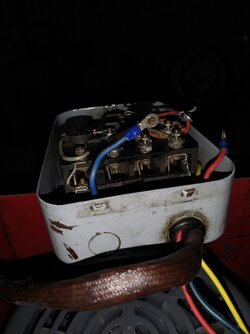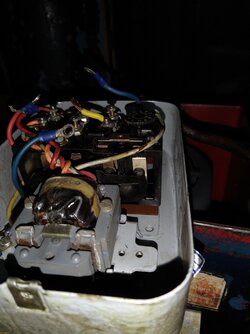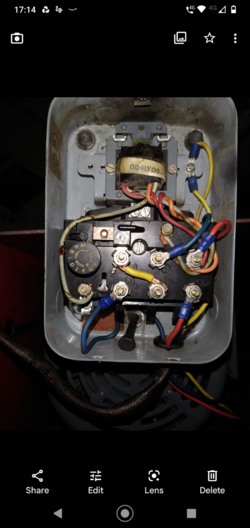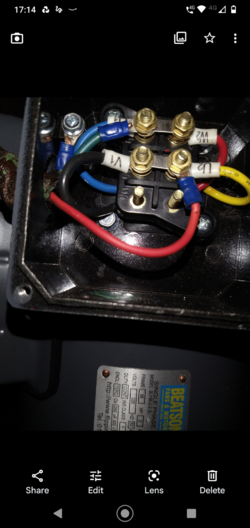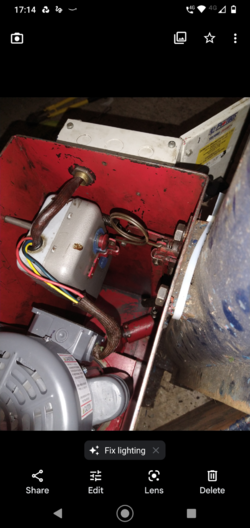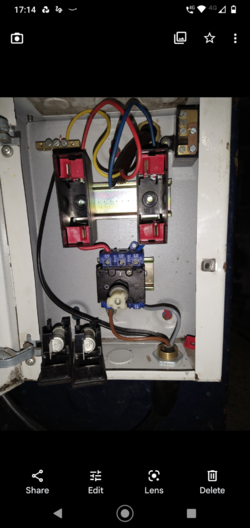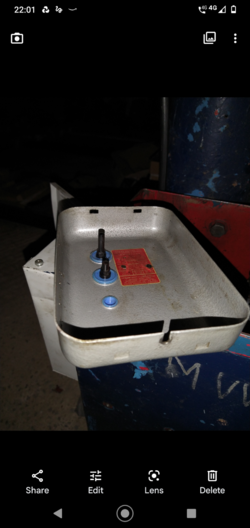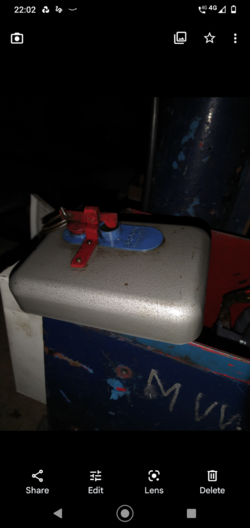W
Welshgixxer
Hi all
From the outset I'm not in an electrician. I am posting here because I'm thinking the subject matter is quite specific and will prob require some historic knowledge/ experience - I'm hoping someone will allow me to benefit from their knowledge.
I am converting a Bradbury 4 post lift (a variation of a liftmaster 735, which I think is a mk1/2) from 3 to single phase - single direction motor.
The issue I have is with the Dol starter. I want to replace the 415v original with a 230v dol starter with overload. The original dols is housed within the oil reservoir and the (dols') on/off buttons are 'pushed' via a mechanical rod & linkage setup connected to the up/down lever on the main post.
I'm thinking I need to either retain the original dol metal enclosure, replacing it's innards OR replace the entire box.
Simplest would appear to be to retain the original enclosure - thus retaining the mechanical on/off linkage - problem would be the successful marriage of the enclosure on/off buttons with the new internals.
Anyone thoughts/ experience/ solutions of/ for this scenario more than gratefully received.
photos attached (hopefully)-
From the outset I'm not in an electrician. I am posting here because I'm thinking the subject matter is quite specific and will prob require some historic knowledge/ experience - I'm hoping someone will allow me to benefit from their knowledge.
I am converting a Bradbury 4 post lift (a variation of a liftmaster 735, which I think is a mk1/2) from 3 to single phase - single direction motor.
The issue I have is with the Dol starter. I want to replace the 415v original with a 230v dol starter with overload. The original dols is housed within the oil reservoir and the (dols') on/off buttons are 'pushed' via a mechanical rod & linkage setup connected to the up/down lever on the main post.
I'm thinking I need to either retain the original dol metal enclosure, replacing it's innards OR replace the entire box.
Simplest would appear to be to retain the original enclosure - thus retaining the mechanical on/off linkage - problem would be the successful marriage of the enclosure on/off buttons with the new internals.
Anyone thoughts/ experience/ solutions of/ for this scenario more than gratefully received.
photos attached (hopefully)-





